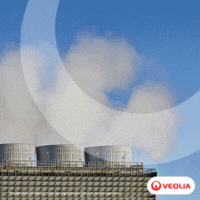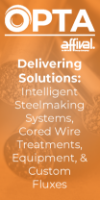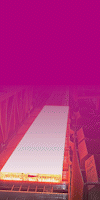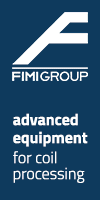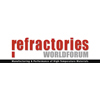NLMK Group Q2 2010 RAS Financial Results
08/05/2010 - Novolipetsk Steel has announced its Q2 2010 Russian Accounting Standards (RAS) financial results for its major companies. Revenue for the Lipetsk production site increased by 33% quarter-on-quarter and 75% year-on-year, mainly as a result of higher prices and seasonal improvement in demand.
Novolipetsk Steel has announced its Q2 2010 Russian Accounting Standards (RAS) financial results for its major companies, including the main Lipetsk production site which demonstrated a substantial improvement in financial performance.
Revenue of the Lipetsk production site increased by 33% quarter-on-quarter and 75% year-on-year, mainly as a result of higher prices and seasonal improvement in demand. A better product mix structure (with a higher share of downstream products) also positively affected the company’s revenue.
Gross profit increased by 45% quarter-on-quarter and 2.5 times year-on-year. Revenue growth as well as the larger share of HVA products in the sales portfolio were the key factors behind the company’s gross profit growth increasing the margin by 3 p.p. quarter-on-quarter.
Net income for the second quarter totaled RUR11,688 million, a 4.4 times increase mainly attributable to the income arising from subsidiaries’ dividends based on the 2009 results. Without this factor, the company’s quarterly net income totaled RUR5,281 million, a two-fold increase.
Net income from the Lipetsk site declined by 47% year-on-year due to the influence of dividends from subsidiaries, which were significantly higher in 2009, driven by pre-crisis results of the companies in 2008.
At VIZ-Stal, higher volumes of transformer steel sales to both domestic and export markets allowed a growth in revenue of 49% quarter-on-quarter and year-on-year, offsetting a non-significant decline in prices.
Gross profit was 26% higher for Q2 2010 as a result of higher utilization rates and lower fixed costs per tonne of steel products. Increase in higher quality transformer steel sales also contributed to the growth of financial and operating results.
The company’s net profit increased by 47%, mainly due to higher operating profit, as well as lower level of miscellaneous expenses. Net profit increased by 2.7 times year-on-year, driven by a reduction in foreign currency exchange losses.
Sequential growth of Stoilensky’s financial results includes sales prices that grew both quarter-on-quarter and year-on-year, driving the company’s revenue growth by 77% and 55%, respectively.
Stoilensky’s revenue growth as well as strict control over production costs allowed quarterly increases in gross profit and operating profit by 2.4 and 2.5 times, respectively. Similar factors determined a year-on-year increase in Stoilensky’s profitability.
High operating profit predetermined an increase in net income by 2.5 times quarter-on-quarter and by 2.3 times year-on-year.
At NSMMZ, seasonal improvement in demand from the construction sector resulted in increased sales volumes and prices for steel products, leading to a 47% Q2 sales revenue growth. The 28% increase in revenue for the year was mainly attributable to higher steel prices and an increased share of downstream products within the sales structure.
NSMMZ’s revenue growth coupled with lower prices for purchased scrap led to an increase in the company’s gross profit by five times quarter-on-quarter. Elevated capacity utilization rates (allowing the reduction of cash cost per tonne of steel products) and improved product mix sales structure also contributed to the higher gross profit.
The company’s net losses are still determined by the high debt leverage. NSMMZ managed to significantly reduce its losses largely due to high financial results from operations.
To streamline the NLMK Long Products Division’s organizational and management structure, NSMMZ was reorganized in Q2 2010 via consolidation with the Berezovsky Electrometallurgical Plant. Its main asset is a rolling mill for manufacturing wire rod with a capacity of c.1 million tonnes. It is currently on the precommissioning stage sourcing semi-finished products from NSMMZ steelmaking facilities.
Altai-Koks’ Q2 revenue increased by 48% and 2.3 times year-on-year, mainly driven by higher prices for coke and chemical byproducts.
The company’s revenue grew faster than production costs, increasing gross profit by 2.5 times quarter-on-quarter and by 3.9 times year-on-year. Management actions directed toward cutting expenditures allowed the Company to keep production costs under control, which also contributed to the Q2 gross profit margin increase of 16 p.p.
Operating profit increased by three times quarter-on-quarter and by eight times year-on-year due to high gross profit and a reduction in selling expenses attributable to the increased share of domestic sales including inter-company transactions.
Operating profit growth was a key factor driving an increase in net income by 3.3 times for the quarter. Financial results from other operations remained largely flat.
Growth of NTK’s own fleet of open cars facilitated growth in volumes of shipping, including by the company’s own rolling stock which resulted in a 19% revenue growth quarter-on-quarter. These factors, as well as railway transportation tariff readjustments, drove its revenue growth by 72% for the year.
NTK’s operating performance improved on both a quarterly and yearly basis. Operating profit margin increased by 3 p.p. for the quarter and 4 p.p. for the year. Higher utilization rates served as an additional driver for NTK’s profitability growth in Q2 2010.
NLMK is one of the world’s largest steel producers. The integrated steelmaking company produces pig iron, slabs, hot-rolled, cold-rolled, galvanized, pre-painted, transformer, and dynamo steel. In 2008, the company sold its products to 70 countries across Europe, the Americas, Asia, Africa, and the Middle East, and produced 15% of Russia’s steel.


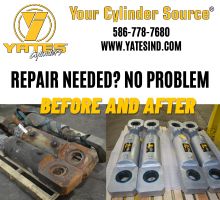
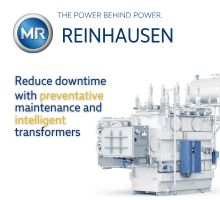-(1)-Reinhausen-(1).jpg?lang=en-US&ext=.jpg)
